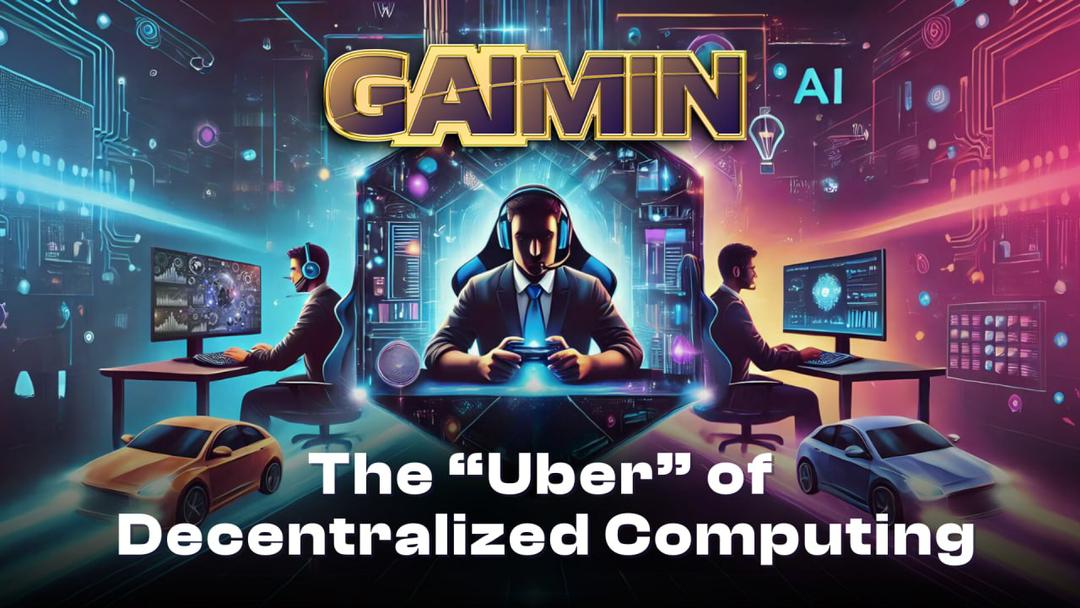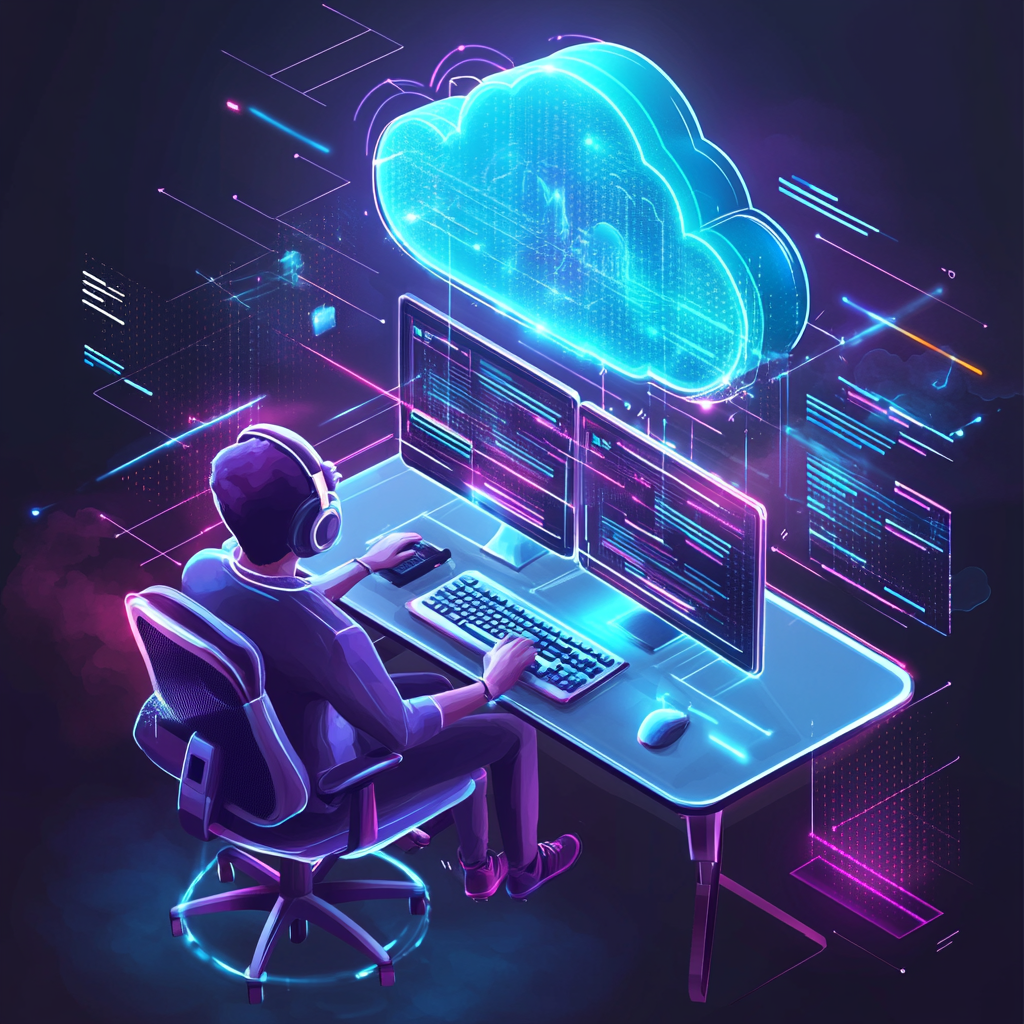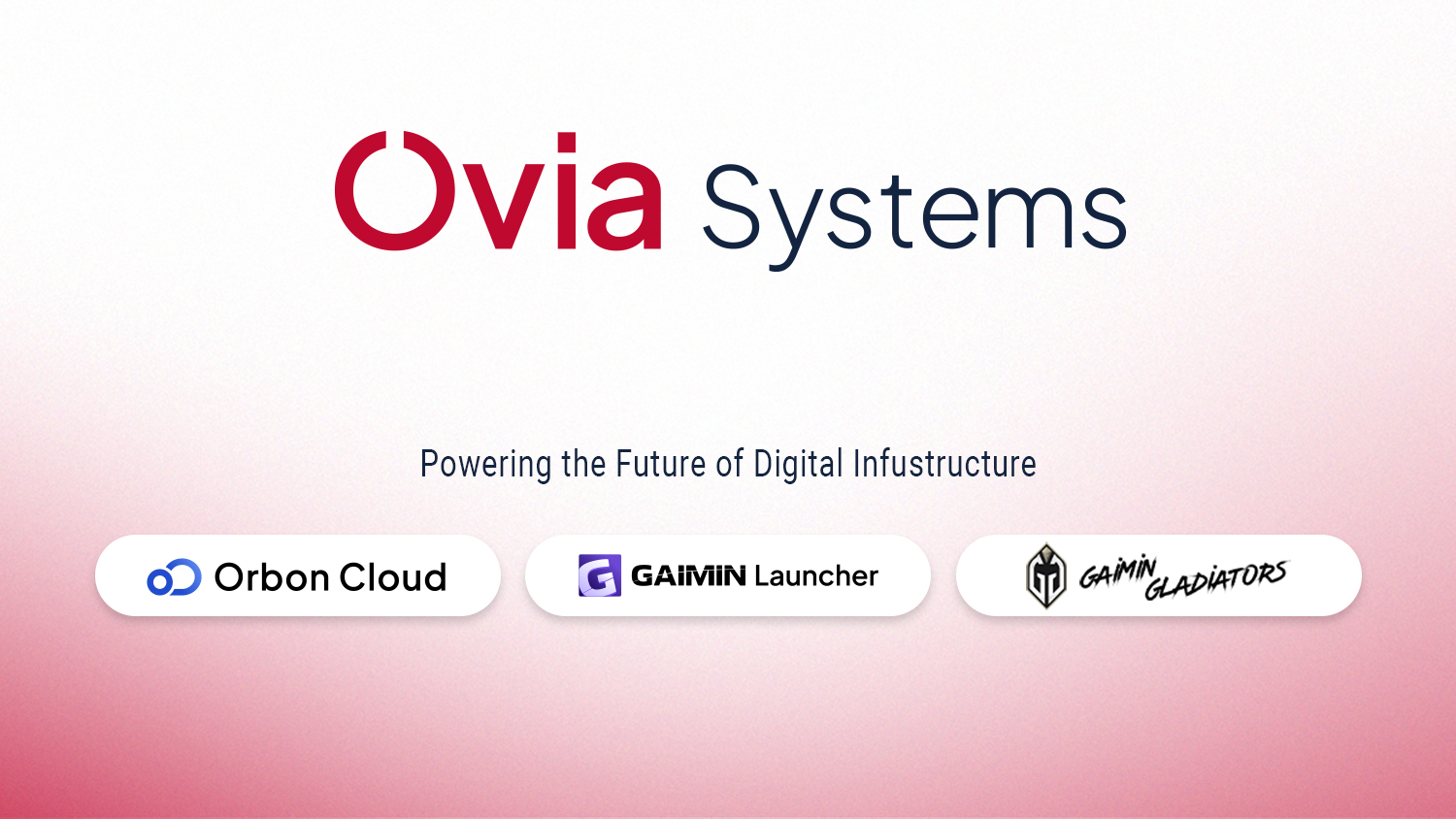

Business has always been about being the “Supply” to a “Demand” in the market. But in the recent modern digital economy, we have seen the rise of business models, predominantly with the likes of Uber and Airbnb, where companies no longer have to be the supply but rather connect the Supply and Demand sides of the market. This business model not only reduces the cost of operation but also promotes efficiency of the process by connecting existing infrastructures to those seeking it, in most cases powered by technology.
That is what GAIMIN is doing in the market of Distributed Computing”. Computational power has in recent times become a valuable commodity. A ‘commodity’ which currently sits on physical computers scattered all around the globe, waiting to be ‘mined’. The demand for this commodity is not reducing anytime soon either. Whether it’s training generative AI models, processing massive datasets, or rendering high-quality graphics, businesses worldwide rely on computing infrastructure to stay competitive. However, traditional solutions provided by centralized cloud services come with limitations—high costs, scalability challenges, and environmental concerns.
Our revolutionary technology at GAIMIN helps harness this untapped supply of computational power from gamers’ PCs to create a decentralized network of supercomputers to cater to this global computational demand. Much like Uber disrupted the taxi industry and Airbnb disrupted the hotel industry, GAIMIN is disrupting the cloud computing industry by connecting gamers—whose GPUs sit idle or underutilized—with businesses hungry for scalable and affordable computational power. The result is a win-win-win business model benefiting the gamers, enterprises, and GAIMIN itself.
This article takes a closer look at how GAIMIN works, our business model, the transformative potential of our decentralized approach, and the challenges we must overcome.

Gamers represent a largely untapped reservoir of computational power. Around the world, millions of gamers own high-performance PCs, whose components they upgrade periodically to match today’s most demanding games. These systems, particularly their GPUs, are also optimized for tasks like rendering, mining calculations, and AI processing—precisely the capabilities needed for many business applications. Yet, when these gamers aren’t actively using their machines, these immense hardware resources sit idle.
GAIMIN transforms these idle resources into a distributed computational network, in two key steps of the process:
On the flip side, the demand for computational resources is skyrocketing for various reasons, which GAIMIN’s decentralized computing network can solve. These include:
While traditional cloud providers like AWS and Google Cloud offer these services, they come with significant costs, both to these businesses and to our environment. GAIMIN provides a better alternative: a decentralized computing network that is not only affordable, scalable, and sustainable, but also eco-friendly.
Core Benefits for Businesses:

GAIMIN serves as the intermediary connecting gamers and businesses. Like Uber, GAIMIN doesn’t own the resources it provides but instead facilitates the operations between the supply and demand side via our cutting-edge technologies:
This model creates a virtuous cycle, where increased adoption on either side fuels growth across the ecosystem.
At the core of GAIMIN’s model lies the concept of Decentralised Physical Infrastructure Network (DePIN), which decentralizes computational power by leveraging existing hardware distributed all around the globe. This is what the process looks like from the supply & demand side respectively:
This process begins with gamers downloading and installing the GAIMIN app:
On the GAIMIN Cloud side, when a business submits a computational task, our system determines the extent of computational power needed to fulfill the task. Next, it starts ‘sourcing’ this power, assigning the task to the designated node(s) via the cloud. If necessary, it breaks the task into smaller workloads. These are then distributed to the most suitable GPUs in the network, ensuring maximum efficiency.
GAIMIN does this while addressing a key concern of decentralized systems—security. Advanced encryption protocols ensure that all data processed on the network remains private and secure, both on the client task and on the gamer’s PC. Once the tasks are completed, the results are aggregated across all nodes and securely returned to the client side.
Our business model comes down to three factors:
GAIMIN’s decentralized model significantly reduces operational costs. By tapping into hardware already owned and managed by gamers, our platform eliminates the need for expensive server farms; potentially saving us and our clients millions of dollars in cost. This cost advantage is passed on to our clients, making top-notch computational power accessible to more businesses.
Unlike traditional systems that require 1-to-1 owned physical hardware expansion to scale, our network grows naturally as more gamers join. This organic scalability ensures the platform can handle increasing demand without bottlenecks.
Traditional data centers consume vast amounts of energy, contributing to carbon emissions. You can read more about how GAIMIN is providing one of the cleanest energy sources for global computing demands here. GAIMIN’s approach is inherently more sustainable, utilizing existing resources instead of building new infrastructure.

Over the years, one of our biggest challenges has been getting gamers to install and enable our app on their device. Some gamers initially hesitate to share their hardware due to concerns about security or performance degradation. GAIMIN addresses these concerns by:
On the client side, businesses are still new to the concept of DePIN. Businesses already accustomed to traditional cloud solutions may be skeptical of a decentralized model. GAIMIN bridges this gap through:
Like any disruptive innovation, GAIMIN faces resistance from entrenched players in the market. Drawing lessons from Uber, the platform focuses on:

Let’s look at some real-world examples of where GAIMIN computing solutions are needed in action. As a business owner or executive in the industries treated below, high chances are, your business falls under any of these scenarios.
Scenario:
A generative AI startup specializing in text-to-image models struggling with the high costs of traditional cloud computing platforms. Training these models required vast GPU resources, often leading to project delays due to limited budgets.
Solution with GAIMIN:
By leveraging GAIMIN’s decentralized network, the startup accesses affordable GPU power, reducing its training costs by 70%. With this faster & more affordable model training, they launched their product six months ahead of schedule, gaining a competitive edge in the market.
Scenario:
A film production house working on a blockbuster movie with heavy visual effects requires a fast rendering solution to meet the tight release deadline. Traditional rendering farms were either too expensive or fully booked during peak production seasons.
Solution with GAIMIN:
The studio taps into GAIMIN’s network for rendering their 3D animations and VFX. GAIMIN’s distributed GPU resources allow them to complete rendering tasks 30% faster than centralized services while staying under budget. This efficiency enabled the studio to allocate these newly saved resources to additional post-production enhancements that boost the success of their movie.
Scenario:
A crypto startup aiming to launch a new blockchain with a proof-of-work consensus mechanism but lacks the computational resources needed for mining during their initial stages. Renting large-scale mining equipment is proving prohibitively expensive for this new startup.
Solution with GAIMIN:
Using GAIMIN’s decentralized GPU network, the startup accesses the initial mining power they need at a fraction of the cost. GAIMIN’s network dynamically adjusts resource allocation based on demand, ensuring steady and reliable mining performance. This allows the startup to bootstrap its blockchain efficiently while keeping operational costs manageable.
Scenario:
A cloud storage company offering P2P file-sharing services is facing challenges in meeting client demand during peak usage periods. Centralized solutions introduced bottlenecks, leading to service interruptions and customer dissatisfaction.
Solution with GAIMIN:
The company integrates GAIMIN’s distributed infrastructure into its backend. By distributing storage tasks across GAIMIN’s network, they scaled their service dynamically to handle peak traffic. This resulted in a 90% uptime and significant cost savings compared to expanding their centralized infrastructure.
Scenario:
A financial data firm needs to process large volumes of real-time market data to provide trading insights for its clients. The firm is struggling with latency issues and high costs when using traditional cloud services for its predictive analytics models.
Solution with GAIMIN:
GAIMIN’s decentralized GPU network allows the firm to analyze data streams in real-time with minimal latency. The distributed nature of the network reduces data travel time, and the cost savings enable the company to expand its analytics offerings to include more markets and asset classes.
Scenario:
A biotech company researching new drug formulations requires computational simulations to model molecular interactions. Traditional cloud services offered scalability but exceeded the company’s budget for research.
Solution with GAIMIN:
Through GAIMIN, the company accessed GPU resources capable of running complex simulations at a lower cost. By completing simulations faster, the research team accelerated their drug discovery process, bringing a promising candidate to clinical trials earlier than anticipated.
Scenario:
A smart city initiative requires a robust AI-powered system to process data from IoT sensors across the city. Centralized data centers couldn’t handle the localized demands efficiently, leading to delays in processing critical information like traffic patterns and energy usage.
Solution with GAIMIN:
GAIMIN’s edge AI capabilities processed data closer to the source, significantly reducing latency and bandwidth usage. The decentralized network ensured uninterrupted service during local power outages, making it a reliable solution for the smart city project.
GAIMIN is not just solving today’s problems in global computing—it’s building the foundation for tomorrow’s innovations. With applications beyond gaming in AI, blockchain, data, health, IoT, etc, our platform has the potential to reshape how industries access computational power.
As the digital economy grows, so too will the demand for scalable, cost-efficient solutions. GAIMIN’s decentralized model positions it as a leader in this space, offering a glimpse into the future of computing.
To get involved today, start exploring GAIMIN’s AI solutions at GAIMIN AI and learn more about The GAIMIN project here. For more information or inquiries, kindly reach out to us here.


